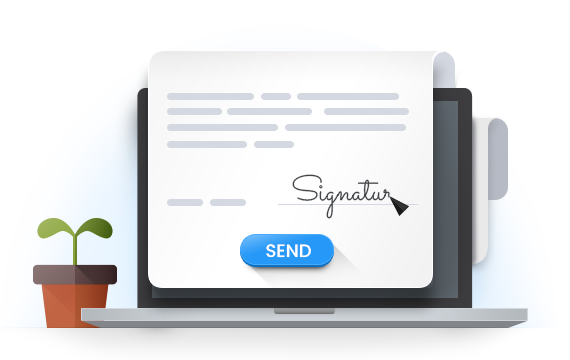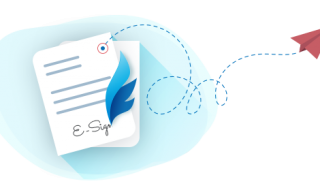
In today's fast-paced business environment, streamlining document signing processes is crucial for efficiency and productivity. For decades, wet signatures, the traditional pen-to-paper method, reigned supreme. However, the rise of electronic documents and digital workflows has introduced a powerful alternative: e-signatures. While both serve the purpose of signifying agreement, understanding the differences between e-signatures and wet signatures is essential for businesses and individuals alike.
The Familiar Friend: Wet Signatures
A wet signature is the physical inscription of a person's name on a document, traditionally done with a pen and ink. For centuries, wet signatures have served as a legal symbol of consent and intent. They offer a visual verification of who signed the document and when. However, wet signatures come with limitations:
- Time-Consuming Processes: Obtaining wet signatures can be a cumbersome process, especially when multiple parties are involved and geographically dispersed.
- Physical Document Management: Wet signatures necessitate printing, physically transporting, and storing paper copies of documents, increasing storage costs and making retrieval challenging.
- Risk of Loss or Damage: Physical documents can be misplaced, damaged, or even destroyed, creating potential legal complications.
The Digital Powerhouse: E-signatures
E-signatures are electronic representations of a signature applied to a digital document. They can take various forms, such as:
- Typed Name: The simplest e-signature involves typing your full legal name on the document.
- Click-to-Sign: Many platforms offer "click-to-sign" functionality, where you click an icon to electronically sign the document.
- Digital Signature Certificates: For increased security, digital signature certificates create a unique electronic signature that verifies the signer's identity and the document's authenticity.
E-signatures: Legally Binding and Here to Stay
The legality of e-signatures is well-established in most countries. The United States Electronic Signatures in Global and National Commerce Act (ESIGN) and the European Union's Directive on a Framework for Electronic Signatures (eIDAS) recognize e-signatures as legally equivalent to wet signatures under specific circumstances. These regulations ensure that e-signatures can be used in contracts and other legal documents with the same binding effect as traditional wet signatures.
When to Use E-signatures vs. Wet Signatures: Choosing the Right Tool
While e-signatures offer numerous advantages, there are situations where a wet signature remains the preferred method. Here's a guide to help you decide:
Use E-signatures for:
- Non-Disclosure Agreements (NDAs): E-signatures are perfect for NDAs and other routine business contracts.
- Permission Slips and Waivers: E-signatures streamline consent for school activities, medical procedures, or other scenarios requiring permission.
- Quotes and Proposals: E-signatures expedite the approval process for quotes and proposals.
- Internal Company Documents: Use e-signatures for internal documents like expense reports or time sheets to boost efficiency.
Consider a Wet Signature for:
- Wills and Trusts: Some legal jurisdictions might require wet signatures for wills and trusts.
- High-Value Contracts: For highly valuable contracts involving significant assets, a wet signature might be preferred for added security.
- Documents Requiring Witnessed Signatures: If a document requires a witness to observe the signing, a wet signature may be necessary.
Webxloo: Your Trusted Partner in E-signatures
Webxloo offers a comprehensive e-signature solution designed to simplify your document signing processes. We provide:
- Secure E-signature Platform: Our platform ensures secure and legally compliant e-signing experiences.
- Multiple E-signature Options: Choose from various e-signature methods to fit your specific needs.
- Streamlined Workflow Integration: We integrate our e-signature solution seamlessly with your workflow software.
- Expert Guidance and Support: Our team provides expert guidance on e-signature usage and legal considerations.
Embrace Efficiency and Security: Sign Electronically Today
By understanding the distinctions between e-signatures and wet signatures, you can choose the most appropriate method for each situation. E-signatures offer a secure, efficient, and legally sound alternative to traditional methods, streamlining document signing processes and propelling your business forward.
Contact Webxloo today! Let's discuss your e-signature needs and explore how we can empower you to embrace a digital signing solution that saves time, boosts efficiency, and enhances the security of your important documents.


 Phone Consultation
Phone Consultation
 Request a quote
Request a quote
 Text a Message
Text a Message